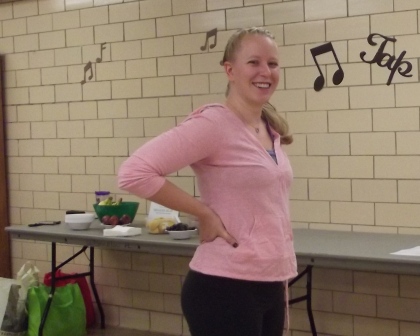Creation and Sources of Inspiration
 The following is a post from Paula, the Joel Hall Dancers choreographer we are working with for Caught: The Woods. If you're curious about how her work turns out, join us for a performance of Caught: The Woods!
The following is a post from Paula, the Joel Hall Dancers choreographer we are working with for Caught: The Woods. If you're curious about how her work turns out, join us for a performance of Caught: The Woods!
Inspiration for movement can come from a myriad of places: a particularly poignant emotion, a life-changing event, a stirring image. Or more mundane things like a bouncing ball, breath, or the color brown. Whatever the inspiration, the movement then flows from the experience, training, and personal voice of the choreographer.
In this case, the inspiration was handed to me: a piece of music and a story prompt. I am accustomed to gleaning inspiration from things I choose myself, things that touch me or affect me. So the assignment of inspiration was at first a constriction to my creative process. What if I didn’t like the song? What if I didn’t relate to the story I was supposed to tell? What if my experiences didn’t have the necessary elements to create a meaningful and entertaining piece?
But the difficulties of the project can’t negate the positive experience that can be had through collaboration. This project was too good an opportunity for me to give up on! So I soldiered on, listening to the music over and over until it started to speak to me. I read the prompt again and again, writing and rewriting a story line that would echo my feelings about the prompt and the expression of the music.
Then I brought in the ultimate assistants: my dancers. No movement can be complete – can even begin to mean anything – without movers. So I took the problem to my company, and we brainstormed about the elements. The story prompt is about a little girl, so we thought about how little kids move. There are toys in the story, so we imagined how to move like the toys would move. We looked for cues and leading phrases in the music to make the whole piece cohesive. And though I may have never chosen to create a story-telling dance about the interactions between a little girl and her toys, and I would never have chosen this particular piece of music to express myself, it is coming together.
The dancers are getting into their roles, bringing more life to the story than I thought possible. The music is starting to really speak into the story, expressing things I didn’t hear the first few times I listened to it.
And there are still elements to add: the live musicians, the audience reactions, the nerves of performance, the physical space in which we will perform. No story is ever simple, every telling hits the listener differently, every re-telling changes it slightly. We have worked to embellish the telling of our assigned story, through music and dance. And we have added a chapter to our own stories, though the creation of something new.
